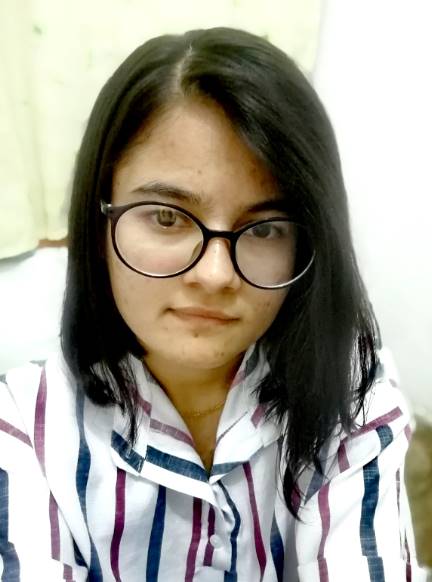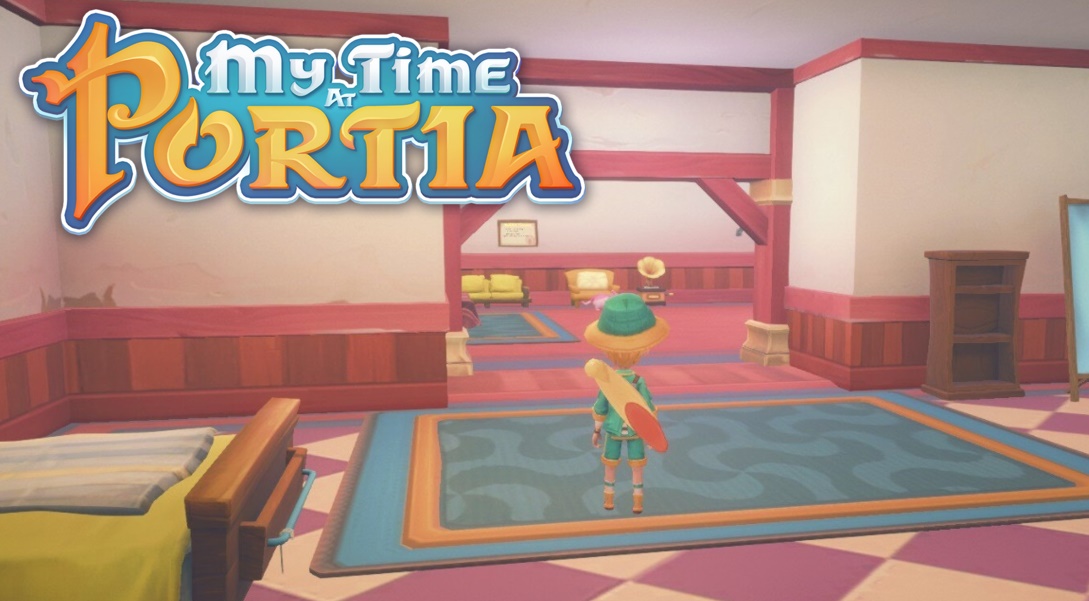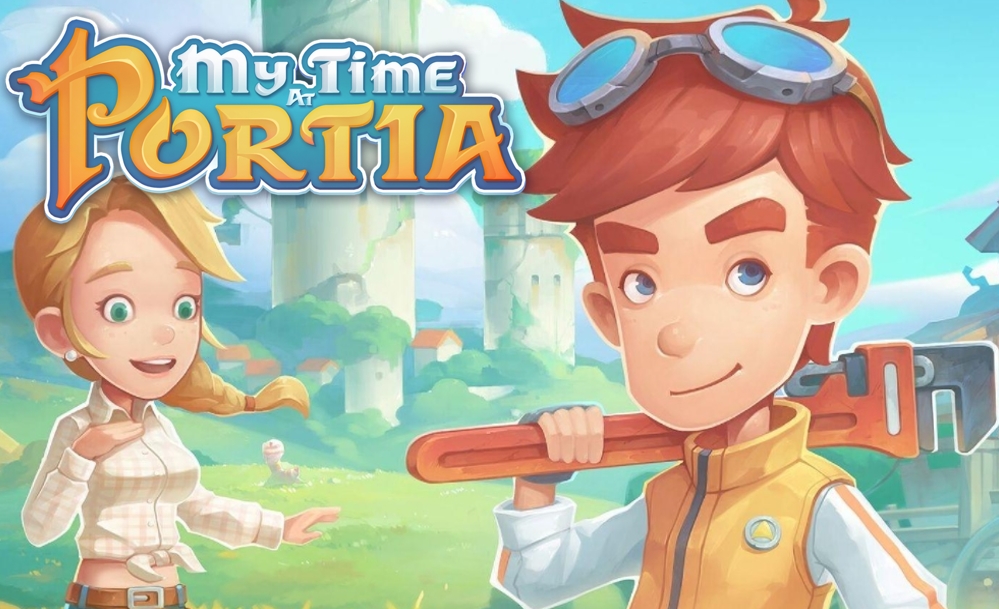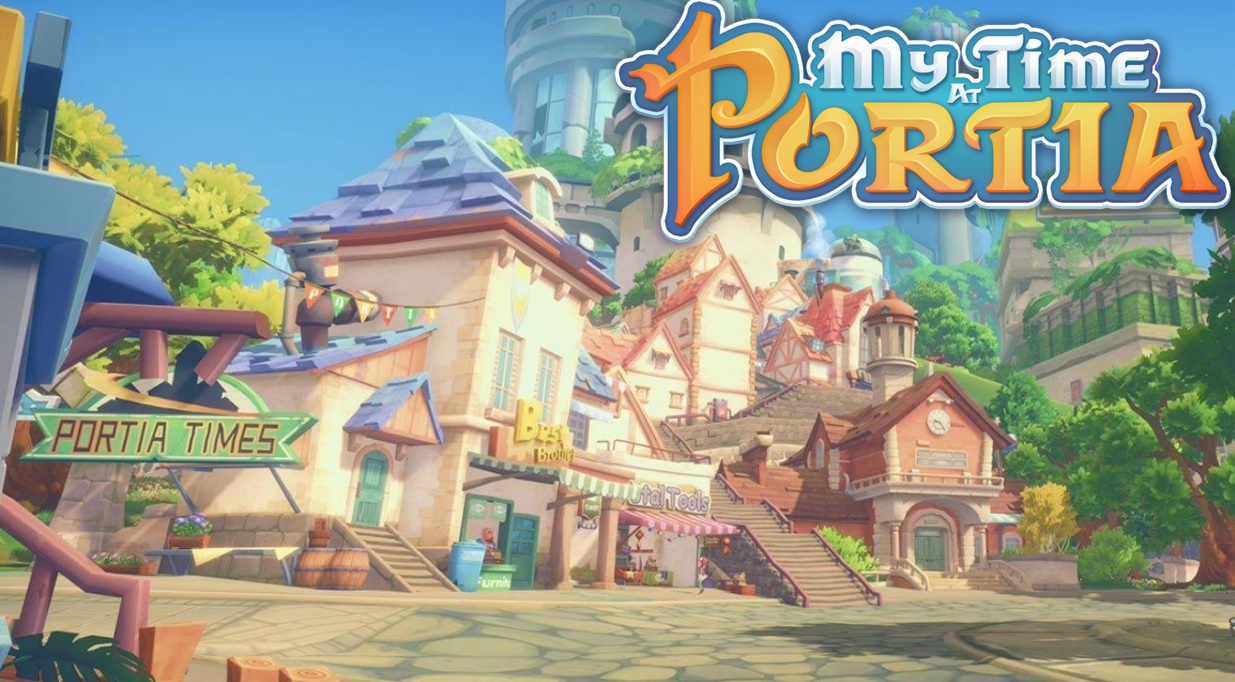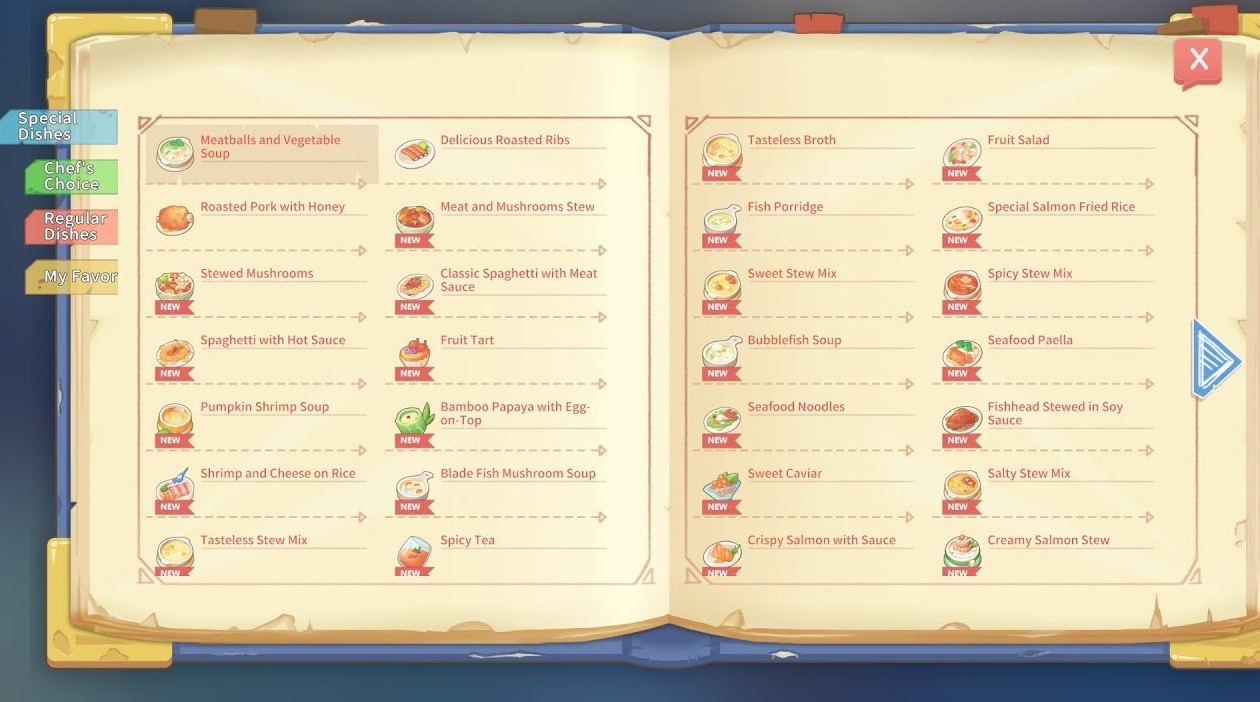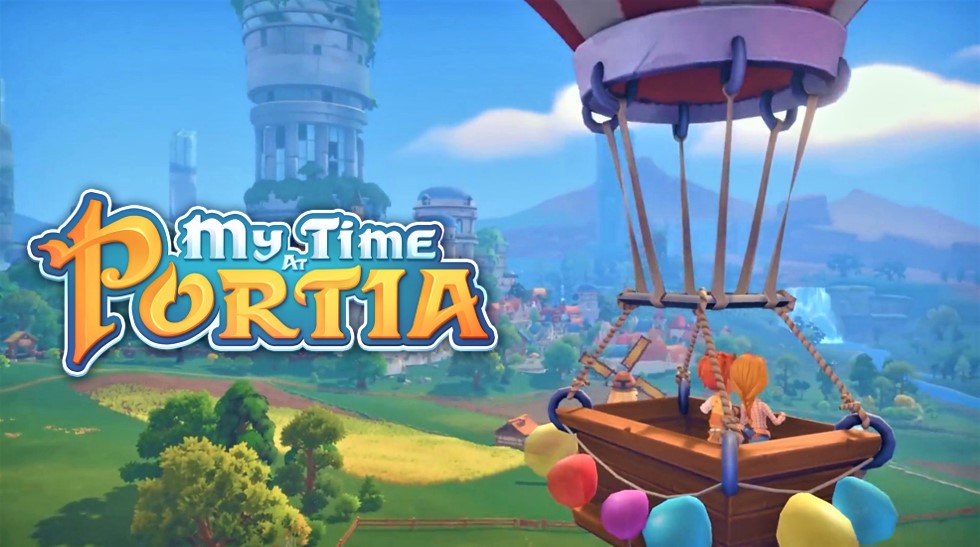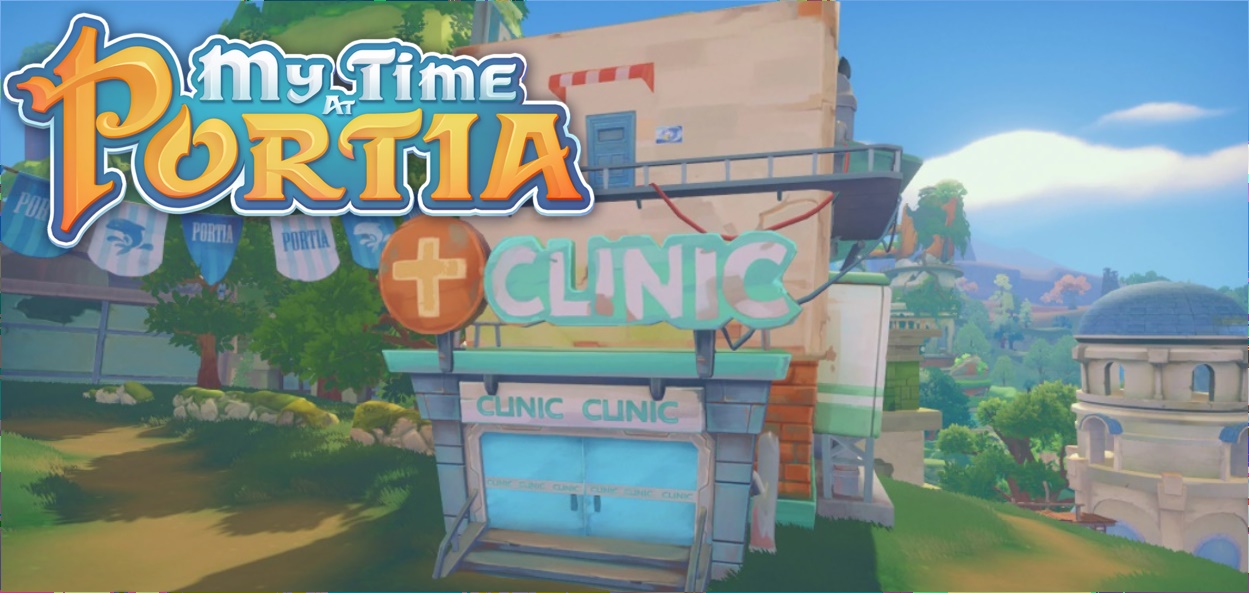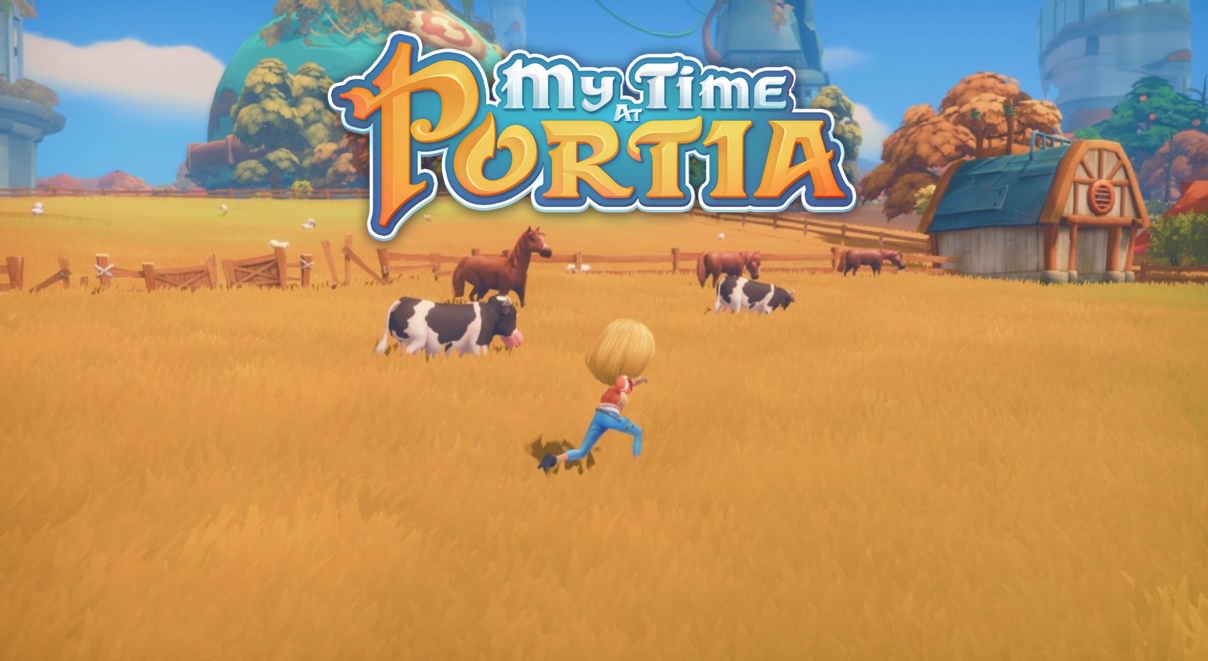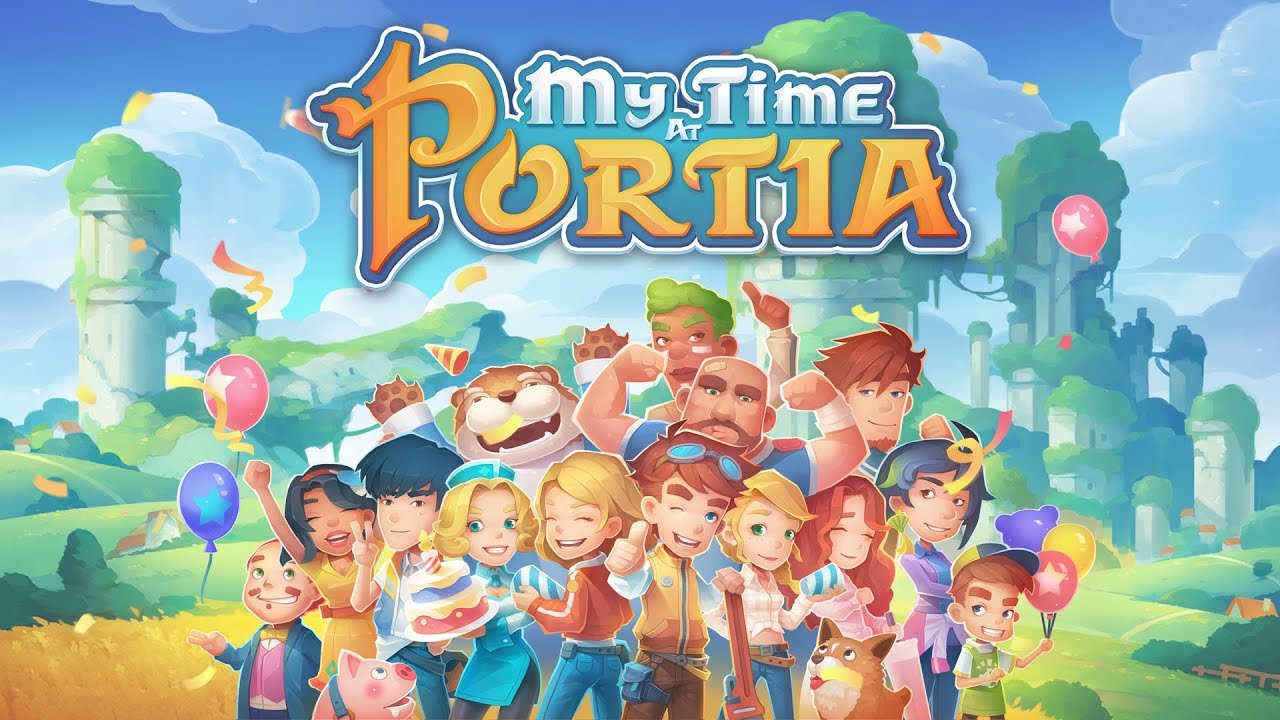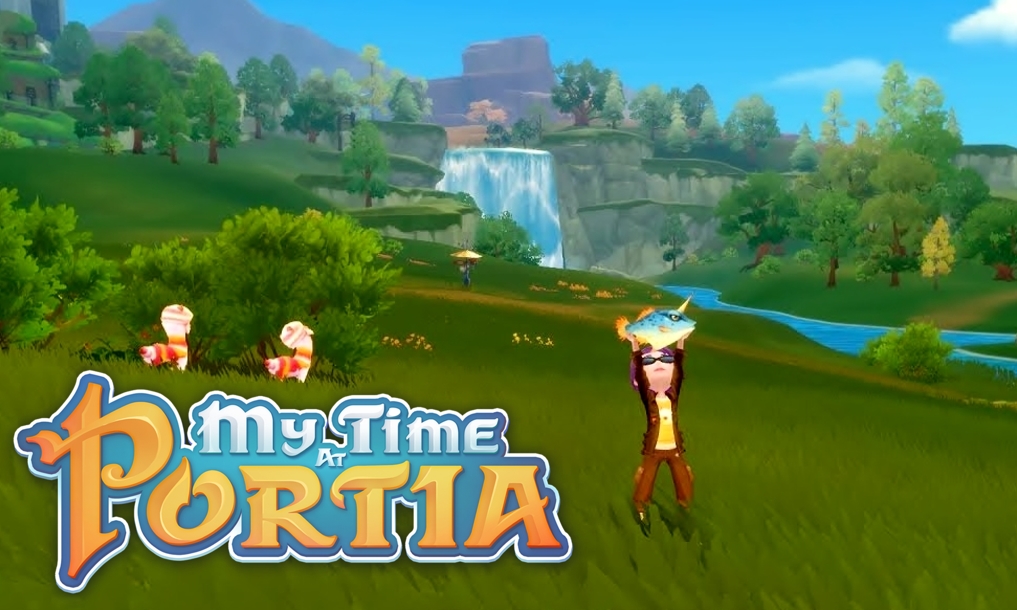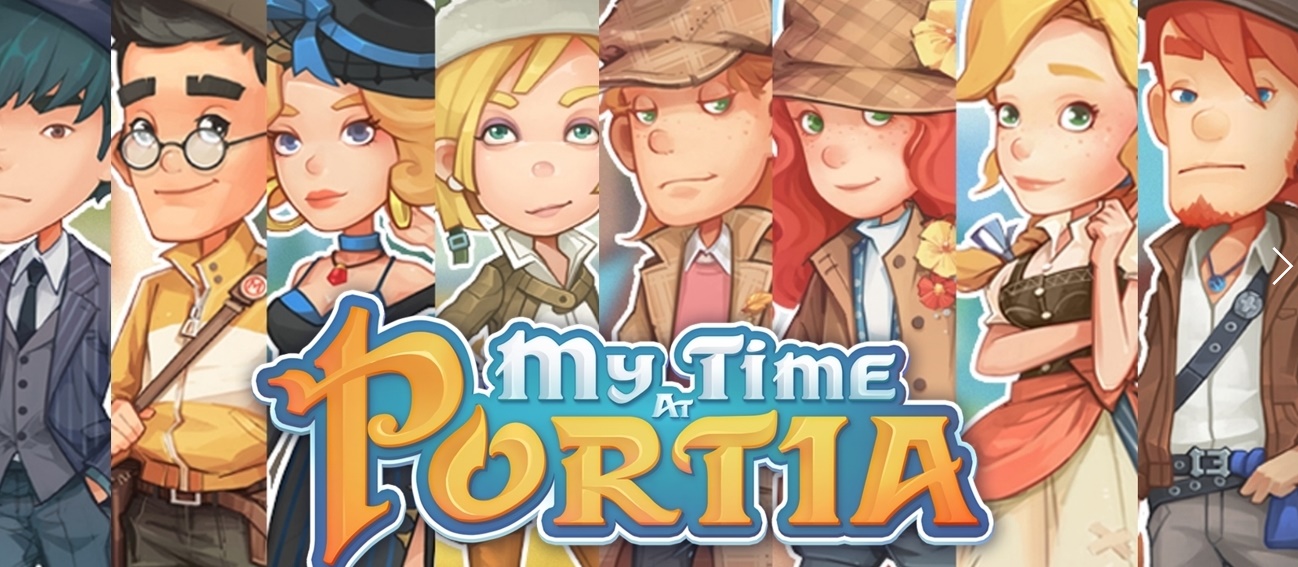
Have you been on the fence about My Time at Portia? I have got you covered!
If you love immersive RPGs, this game might probably be for you. But people have since been on the fence about this game. Those who love it can’t help but love it and those who don’t, find it just ‘meh’. The only way to find out whether it’s one or the other is to… well, play it. That’s what I did, and I am here to answer all your burning concerns about the game.

A Player in the fields
About the game
My Time at Portia tries to squeeze in many things at a time and, impressively, it manages to live up to the expectations to fulfill them. There is a massive amount of content in the game and too many things to do. If you could choose one game to play every day for the rest of your life, it should probably be this one because it’s going to take a lot of time to complete the quests and do everything that Portia offers. But it does not disappoint! It has everything that you might want in a game. Mining? Check. Building and selling things? Check. Farming? You got it. Fishing? Go crazy! Fighting monsters? You have a ton of ruins where you can indulge your heroics.
The best part of the game is that there are so many NPCs and they are very interactive. You can give them gifts, befriend them, romance them, or get married and start a family! Beware, they have their own likes and dislikes and the main player needs to keep a close eye when giving them gifts, so you don’t earn their wrath. Yikes! Here is a fun fact: give them gifts when on a date or their birthdays to earn extra points to build your relationship faster.

In a world of Portians
My Time at Portia is developed by Pathea Games and has sold 1.7 million copies worldwide. The review for the game, to say the least, has been mixed. It received 73/100 on Metacritic. Miranda Sanchez of IGN had stated that even with so much to do in Portia, it didn’t feel like “it was dragging her around” but letting her “explore everything at my own pace”. Her verdict was that, although it had some things lacking in each of the parts and some annoying audio bugs, she was hopeful to see how it would evolve in the future.
Rich Meister from Destructoid rated it 5.5/10 stating that “the world of Portia is full of promise but the time investment it requires makes it tough to recommend as is”. All in all, the reviews for My Time at Portia have been mostly good. The reason for this success is due to the exploration feature of the game and the way it allows the player to build their own mini-world which is not just to farm, build, and collect, but also to explore new areas and mini-games inside the game on different seasons and events.
Story

The mighty J. Peach statue
The game begins long after civilization as we know it has been destroyed. People have started life again with what they could find. J. Peach is a notable figure in the game who was able to bring the world out of the Age of Darkness and lead the people to create a habitable life after the end of civilization. However, the game itself doesn’t have a specific plot that needs to be followed. As the player gets commissions from the Commerce Guild and builds things and starts befriending the NPCs, they get new quests to progress the storyline.
The way some NPCs who are devoted to the Church of Light in the game abhor technology intrigues me as a player to find out about the old world. The storyline does not much dwell on the past of the NPCs which I feel could be an interesting take if included.
Gameplay
The thing I love the most about My Time at Portia is the character customization. The player can choose from a range of skin colors, hair, face, gender, name, etc. If the player decides to alter anything later in the game, they can head to the barbershop after completing the quest ‘Strange Lenses’. When the player first visits there, the barber does this for free as thanks for finding the lenses for him. Although, the player cannot change the skin color later in the game.
My Time at Portia (Gameplay) - EP01
The game is so immersive that the player can indulge in anything they like. For those who love monster hunting, there are so many ruins to explore. The player can go mining in the abandoned ruins to collect raw materials like iron, aluminum, etc. for building purposes. They can take requests from the commerce guild to build things for other NPCs and earn some money (Gols). There are various quests assigned by the NPCs which sometimes require the main player to visit different places to solve their problems.

The map of Portia
There are a lot of places to explore in Portia. Most times, the side quests from the NPCs urge the player to visit these places and interact with the NPCs in these areas. It is always great to develop a relationship with these characters to gain extra points for stamina or experience. I have also found My Time at Portia to be the first inclusive game I ever played. It allows you to romance any character present in the game irrespective of their gender. It is exciting to walk around the world of Portia and interact with the colored casts who have different stories to tell.
Some characters like Arlo who works at the Civil Corps in the game, when befriended, can gift the player with loots collected from the ruins. Oaks is an interesting character in the game. He was adopted by a bear as a child and lives with Papa bear (the bear sometimes wears a blue bathrobe). It is also entertaining that the genius scientist in the game is named after Merlin, the magician.
The game is like a mini version of reality where you meet different people with different professions, passions, and backgrounds. It is very captivating and doesn’t feel repetitive. There are always new things to discover as one proceeds with the gameplay. Because of this reason, the gameplay might be longer than one expects.
As much as the world of Portia is fascinating for me, I was curious about the old civilization that is insinuated in the game to have fallen. It would have been interesting if there was a way in the game to explore the past stories of the old world. Another improvement that the game could focus on would be of reducing the crafting time to half. Some take hours to craft and the player is left with nothing much to do. I also wish there was a feature for automatic save for the gameplay so that I don’t need to put the character to sleep every time to not lose my progress.
I have been thinking of replaying My Time at Portia because there are always secret quests that are only unlocked depending on who the main player chooses to romance with. For Arlo, there was a cave in the Eufaula Desert where he and the main player had to battle some monsters. The main player gets injured and falls and Arlo catches them. The cutscene plays where the two share their first kiss. How romantic is that?! There are secret quests like these for different NPCs which can only be opened after the player romances them. However, the player can only romance one NPC once their relationship has advanced. It makes me curious to play the game again for those secret quests. There are so many other things to complete in the world of Portia that I would definitely want to replay it from the start to find out the things that I might have missed.
Combat
The combat in My Time at Portia is basic but decent. Attacking is as simple as selecting a weapon in the quick bar and clicking the left mouse button. The monsters are fairly easy to beat and the difficulty level increases with the type and number of monsters being battled. Defense is usually limited to dodging and sprinting which consumes Endurance. It is encouraged to stock up on salves and food to restore one’s stamina and HP (health points), especially when exploring ruins that have many levels with many dangerous monsters. If the player is defeated in battle, they are sent back to the workshop. The player can also challenge NPCs to sparring matches.
My Time at Portia #23 Hazardous Ruins Floor Boss
Having good weapons and gear always works in favor of the player. These weapons can be crafted in the worktable in the workshop or bought from shops in the market. The player can also decorate their home with trinkets and things found in the ruins which might contribute to increasing stamina, attack, defense, etc. The fighting capabilities can also be improved through the skill system.

The Skill Tree
Any activity in the world of Portia awards experience which will increase the level of the character. Each increase in level will reward the player with a skill point. There are three categories: fight, gather, and social. The points can be allocated to any of the three categories. The ‘fight’ section vastly improves combat abilities, while the ‘gather’ section will improve efficiency in collecting raw materials needed for crafting. The social category will help advance relationships. Mei, a newspaper reporter in Portia, grants 25 stamina points if the player can develop the relationship level to ‘Best Friend’.
Quest/Mission System
The type of quests varies greatly in the game. Sometimes the player needs to build things as part of a quest, other times the player will be helping the NPCs solve their problems through various means. These quests are divided into ‘Main missions’ and ‘Secondary missions, other ‘Friendship missions’ and ‘Romantic missions’ can be unlocked as the player develops their relationship with the NPCs.
The main missions progress the story in the game while the secondary missions are optional but might reward the player with unique gifts or relationship points. There are always new types of quests and new things to build. All in all, Portia keeps the player pretty occupied.
The player can get quests to build bridges to access the nearby island. Once Alice of the flower shop asks the player to create a poster for her and paste it all over Portia to help with the flower sale. Some other times the player gets minor missions to help find the lost dog, Scraps. Eventually, when the main player develops their relationship by earning points by feeding the stray animals, like Scraps and Pinky, they linger around the player’s house and can be adopted as pets.
Graphics
Many people have complained about the lag in the game. My Time at Portia provides multiple graphics settings such as Texture Quality, Graphics Quality, Grass Quality, Shadow Quality, etc. Playing around a little with the settings and lowering the resolution to low/medium helps with the flow of gameplay. I usually use the medium resolution for Shadow Quality and ‘Good’ for Grass, Texture, and Graphics Quality. Despite that, the game sometimes crashes. This area is something that the developers could improve upon.
Pathea Games, in an interview, have talked about Ghibli films like Nausicaä of the Valley of the Wind and Laputa: Castle in the Sky as inspiration for in-game world-building. No wonder the mountains, hills, and the town are so colorfully vibrant while the decrepit ruins add a nostalgic beauty to the landscape!
The sound or the music becomes a little jaded after a while. Perhaps if there were more musical varieties in the game it could add more to the already whimsy, nostalgic feel of the game.
Pathea Games
Pathea Games developed My Time at Portia for Microsoft Windows, PlayStation 4, Xbox One, and Nintendo Switch which was released in 2019. The developers are always attentive to the quality of gameplay. In fact, there is a phonebooth in Peach Plaza in-game. This is an interactable object which breaks the fourth wall because it lets the player ‘talk’ with Pathea Games. When clicked on the booth, a message appears on the screen which provides Pathea’s email that the player can use to write about their complaints, suggestions, issues, etc.
Pathea Games have listened to the community of gamers to improve many bugs and offer fixes to their games. They have since turned to develop the sequel My Time at Sandrock at present.
Price
My Time at Portia is priced at 29.99$ with a file size of 4.8 GB. It is playable on Microsoft Windows, Nintendo Switch, PlayStation 4, and Xbox One. An android and IOS version are anticipated to be released in 2021 (here’s to hoping!). My Time at Portia is an offline game and there seem to be no in-app purchases as of now but perhaps that might change once it has been developed for Android and IOS.
Final Verdict
Pros
- Great visuals
- Variety of different quests
- Many interactive features- farming, fishing, mining, battling monsters, building, etc.
- So many Missions to keep the player occupied
- Numerous different types of characters to interact with
- Always new and interesting things to unlock/explore
Cons
- No automatic save feature
- Lags/crashes when played in the highest graphics quality
- Drab music
- Crafting time too long
Score
8/10
The vast array of quests, activities, and interactions makes this gameplay an interesting and lively adventure to remember but could do with some improvements for some of the issues. However, My Time at Portia does take the prize for including colored casts and not sticking only with heteronormativity in romantic relationships.
You May Also Be Interested In:
- [Top 10] My Time at Portia Best Weapons
- [Top 10] My Time at Portia Best Husband
- My Time at Portia Best Wife (All Wives Ranked Worst To Best)
- My Time at Portia Review - Is It Good or Bad?
- [Top 7] My Time at Portia Best Fishing Spots
- [Top 5] My Time at Portia Best Armors
- Top 10 Games Like My Time at Portia (Games Better Than My Time at Portia In Their Own Way)
